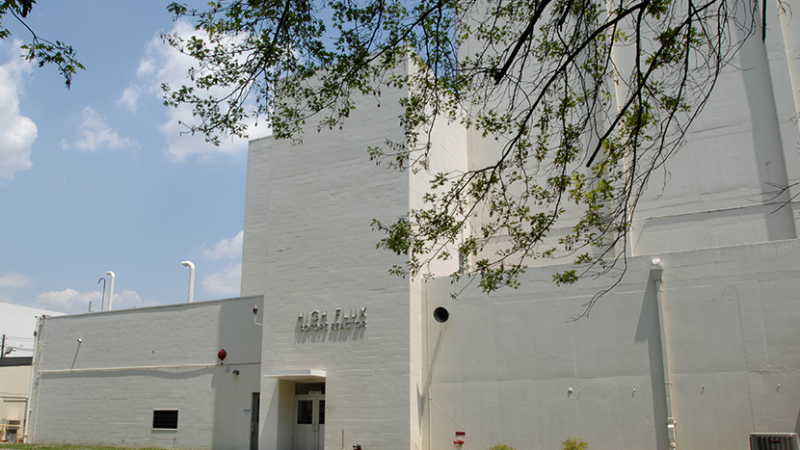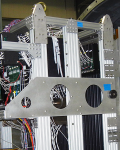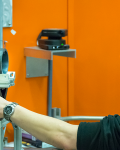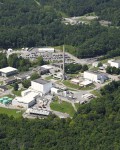Research using ORNL’s user facility tools has potential applications in a variety of energy technologies: superconducting materials, energy efficient transportation, cost-effective ethanol production from cellulosic materials, thermoelectric materials that convert heat to electricity in cars, solar energy, and carbon sequestration and enhanced coalbed methane recovery. Researchers attending sessions at ORNL’s User Week were exposed to a diverse energy research portfolio.
Some of the most exciting energy-related research at the HFIR and SNS neutron scattering facilities has demonstrated that iron-based superconductors discovered in 2009 have magnetic properties similar to those of high-temperature copper-based superconductors discovered in 1986. The results of work in this area could lead to valuable information on how to design robust superconductors that operate at near ambient temperature.
Research at HFIR’s Neutron Residual Stress Facility shows promise in identifying techniques that would make it feasible to bore holes in truck frame rails to reduce the weight of the heavy frames. Heavy-duty vehicles, which represent 4% of U.S. vehicles, consume 20% of oil-based transportation fuel. Hole cutting would increase truck energy efficiency and save considerable steel.
Researchers at the Bio-SANS at HFIR conducted the first small-angle neutron scattering (SANS) study of changes in the structure of a microcrystalline cellulose during enzymatic digestion, a step in producing ethanol fuel. They found that a significant amount of agitation is needed to enable enzyme digestion to affect nanopore structure. The SANS data indicated that rapid digestion occurs in or around water-filled pores.
One proposed “kill two birds with one stone” approach to energy challenges is to force methane from underground coalbeds by injecting carbon dioxide into the coal pores where the methane resides. If the enhanced coalbed methane recovery technology works as planned, methane could be extracted for use as fuel (natural gas) and the CO2 could be sequestered, keeping it out of the atmosphere to slow the buildup of climate-altering greenhouse gases.
Yuri Melnichenko and his team have used X-ray and several SANS techniques to measure CO2 sorption in two samples of coal. In this case, sorption is the process by which coal takes up or holds onto CO2. The results indicate that CO2 sorption into coal pores differs greatly among different coals and depends on the amount of mineral matter dispersed in the coal matrix. A purely organic coal matrix adsorbs more CO2 per unit volume than one containing mineral matter, but mineral matter markedly accelerates the sorption kinetics.
For widely different samples, the results show that CO2 sorption occurs preferentially in the smallest micropores and that the density of CO2 sorbed in coal depends on the pore size and can exceed the density of bulk CO2 at the same pressure and temperature by a factor of 2 to 5.
Andrew Payzant, a group leader in ORNL’s Materials Sciences and Technology Division, noted that the tool he uses, X-ray diffraction (XRD), has been used at ORNL’s High Temperature Materials Laboratory to study thermoelectric clathrates, semiconducting materials with cage-like structures in which atoms rattle around, blocking heat flow but allowing electricity to be generated from heat. ORNL researchers seek to identify or create the best thermoelectric materials for possible use in cars to convert waste heat from brakes into power for accessories.
Payzant’s team also has studied copper indium gallium selenide (CIGS) using XRD. CIGS, which can take up a large part of the solar spectrum, is used as a light absorbing material for thin-film solar cells.
In the hands of users with the right expertise, scientific user facilities offered by the Department of Energy at ORNL can provide valuable information for tackling the world’s energy challenges.
This research was funded by the U.S. Department of Energy (DOE) Office of Basic Energy Sciences.







